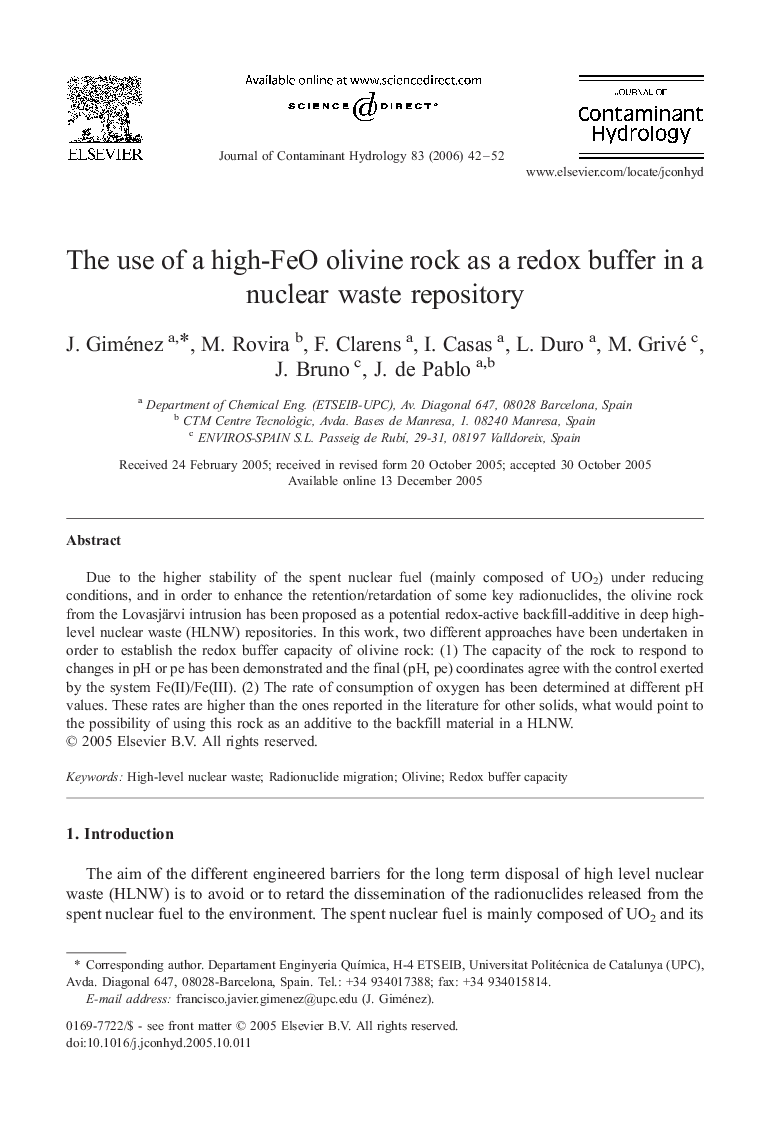| Article ID | Journal | Published Year | Pages | File Type |
|---|---|---|---|---|
| 4547759 | Journal of Contaminant Hydrology | 2006 | 11 Pages |
Due to the higher stability of the spent nuclear fuel (mainly composed of UO2) under reducing conditions, and in order to enhance the retention/retardation of some key radionuclides, the olivine rock from the Lovasjärvi intrusion has been proposed as a potential redox-active backfill-additive in deep high-level nuclear waste (HLNW) repositories. In this work, two different approaches have been undertaken in order to establish the redox buffer capacity of olivine rock: (1) The capacity of the rock to respond to changes in pH or pe has been demonstrated and the final (pH, pe) coordinates agree with the control exerted by the system Fe(II)/Fe(III). (2) The rate of consumption of oxygen has been determined at different pH values. These rates are higher than the ones reported in the literature for other solids, what would point to the possibility of using this rock as an additive to the backfill material in a HLNW.
